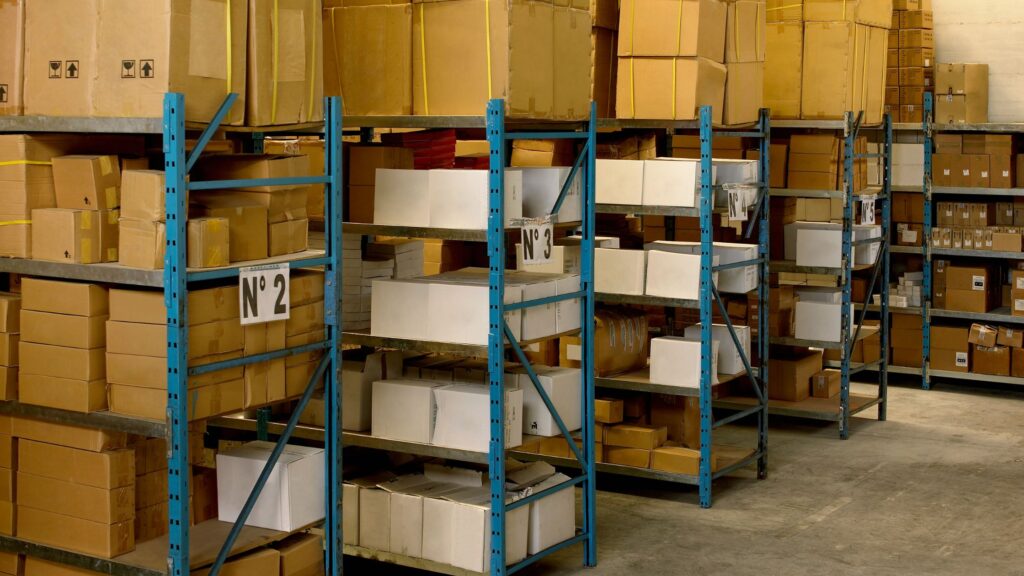Every e-tailer has faced a silent but costly problem: dormant stock. Those products that lie dormant at the back of a warehouse tie up cash, take up space and degrade profitability without you always realizing it.
However, these “forgotten” inventories are not necessarily a dead loss: when properly managed, they can become a lever for logistics and sales optimization. Let’s take a look at how to identify them, calculate them, reduce them, and above all, turn them into a real performance opportunity.
What is dormant stock (or dead stock)?
Dormant stock corresponds to products in inventory that have not been sold, or sold very slowly, for a prolonged period. It should not be confused with dead stock, which refers to totally unsaleable items (out-of-date, obsolete, damaged).
In a nutshell:
- Dormant stock = product still saleable but with low turnover.
- Dead stock = unusable product, to be sold off or disposed of.
Lightspeed ‘s article on dormant stocks points out that these stocks often appear after a forecasting error, a short-lived trend or a seasonal overstock. These products no longer generate sales, but continue to mobilize space and capital.
Why does dormant stock affect your profitability?
Dormant stock is far from trivial. It slows down overall stock rotation and affects profitability on several levels:
1. Financial fixed assets
Each dormant product represents blocked capital, value that no longer generates cash flow.
2. Unnecessary storage costs
The longer a product is stored, the more it costs (location, handling, insurance, energy, etc.).
3. Risk of obsolescence or loss of value
In cosmetics, textiles or technology, a dormant stock quickly becomes a dead stock.
4. Impact on cash flow and agility
Overcrowded warehouses and blocked cash flow limit investment and restocking capacity.
Good to know: According to several logistics studies, dormant stock can represent up to 25% of the total value of an inventory.
How do you identify and calculate dormant stock?
The first step in taking action is to measure. Stock is considered dormant when there has been no movement (sale, issue, replenishment) for a certain number of days.
Calculation methods
The simplest formula is to observe inventory turnover:
Turnover rate = (Sales / Average inventory)
An item with little or no turnover over several months is potentially dormant.

Use your WMS to detect dormancy
Logistics management software (WMS) like Iziship’s enables real-time monitoring of product movements, slow-moving items and inactive stocks. Automatic alerts can be set up to trigger action (discounting, repackaging, destocking).
To understand how modern logistics differ from traditional warehousing, read our article on the differences between fulfilment and traditional logistics. between fulfillment and traditional logistics.
Analyze by category
Some products naturally take longer to sell out. Analysis by family, season or sales channel (website, marketplace, B2B) enables you to target actions without affecting the overall balance.
How do you reduce or eliminate dormant stocks?
- Set up targeted sales operations
– Private sales, bundles, flash promotions.
– Packaged offers or “1 bought = 1 offered”.
– Referencing on marketplaces to give a second life to slow-moving products. - Outsource your logistics
Calling on an e-commerce logistics partner like Iziship allows you to:
– Optimize storage space with intelligent warehousing.
– Transform fixed costs into variables (you only pay for the volume actually processed).
– Manage stock rotation in real time with precise indicators. - Rethinking demand forecasting
Data from the WMS enables us to better anticipate sales and adjust replenishments. Predictive management mechanically reduces dormant volumes.
- Enhancing the value of dormant stocks
Certain items can be:
Reconditioned or revalorized.
Donated or recycled (CSR action).
Transformed for other uses (promotional pack, seasonal box).
Transforming dormant stock into opportunity through logistics
At Iziship, we believe that dormant stock doesn’t have to be. Thanks to our connected platform, we enable e-tailers to :
- Quickly identify dormant references via WMS traceability.
- Set up automatic alerts on inactive products.
- Reorganize warehouse space to maximize profitability.
- Implement concrete solutions: destocking, recycling, smart discounts.
By centralizing management, traceability and logistics performance, Iziship turns a dormant stock problem into a genuine strategic asset.
Frequently asked questions about dormant stock
Dormant stock can still be sold, while dead stock is unsaleable or obsolete.
Analyze turnover and movements over a given period. A WMS can automate this task.
Private sales, repackaging, recycling or logistics outsourcing to reduce dormant volumes.
It ties up capital, increases storage costs and reduces the available margin.
Thanks to its connected WMS, tracking tools and optimization processes, Iziship helps e-tailers to anticipate, sell and make the most of their dormant stocks.

In a nutshell
Dormant stocks are not an inevitability, but a signal. Properly identified and managed, they become an opportunity to rethink logistics, optimize costs and free up cash.
With Iziship, every product regains its value thanks to connected, agile and high-performance logistics.

